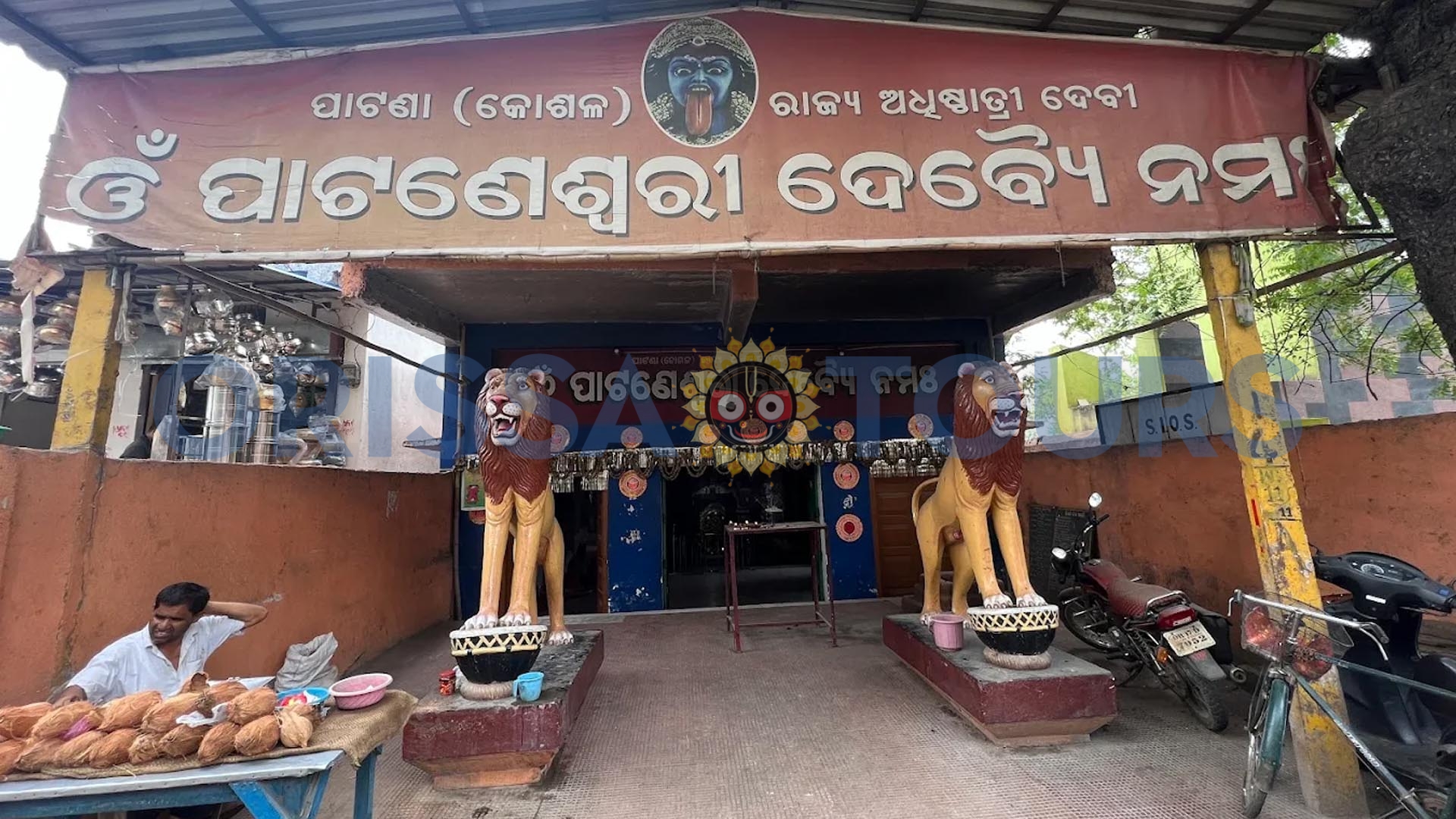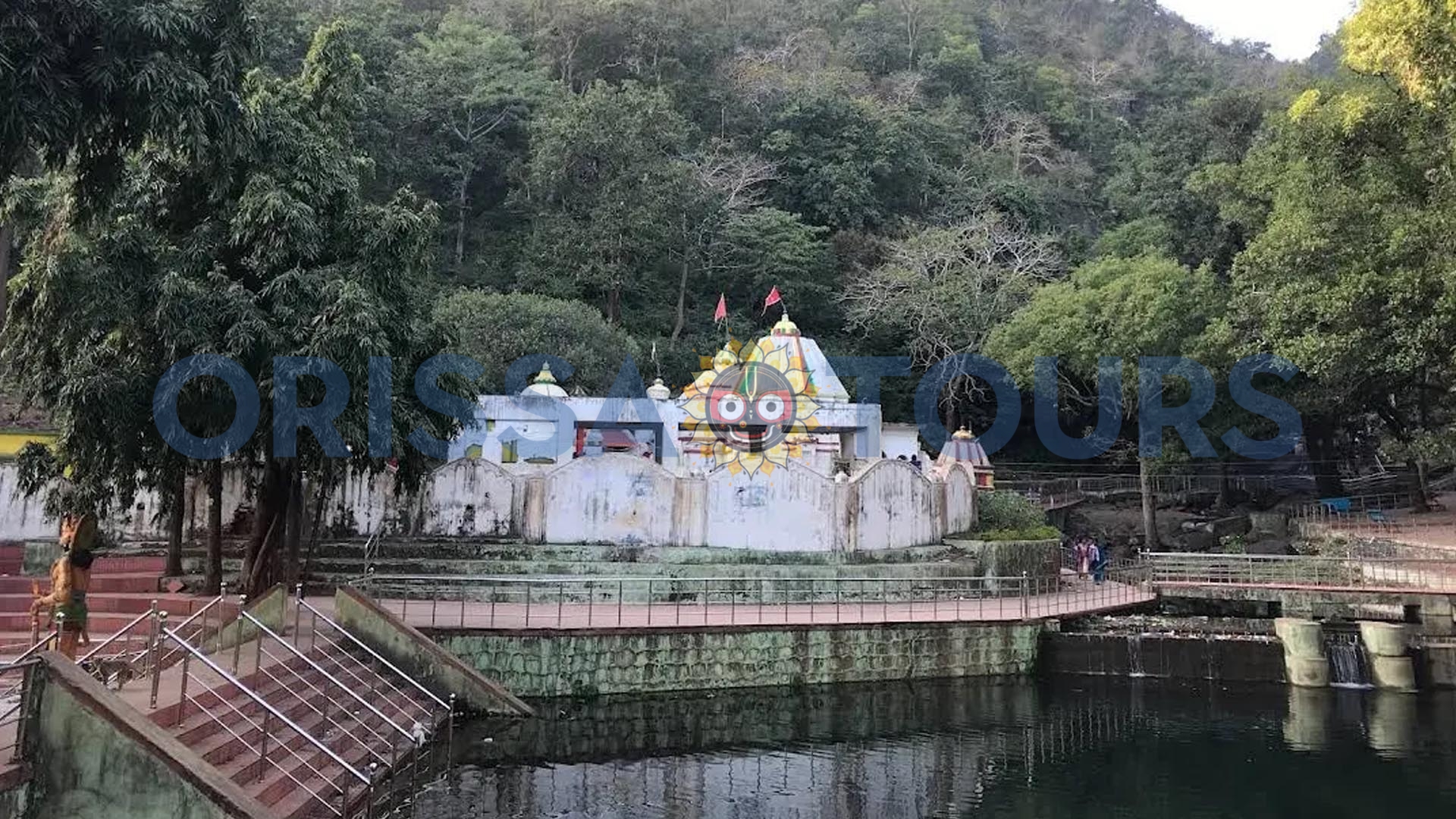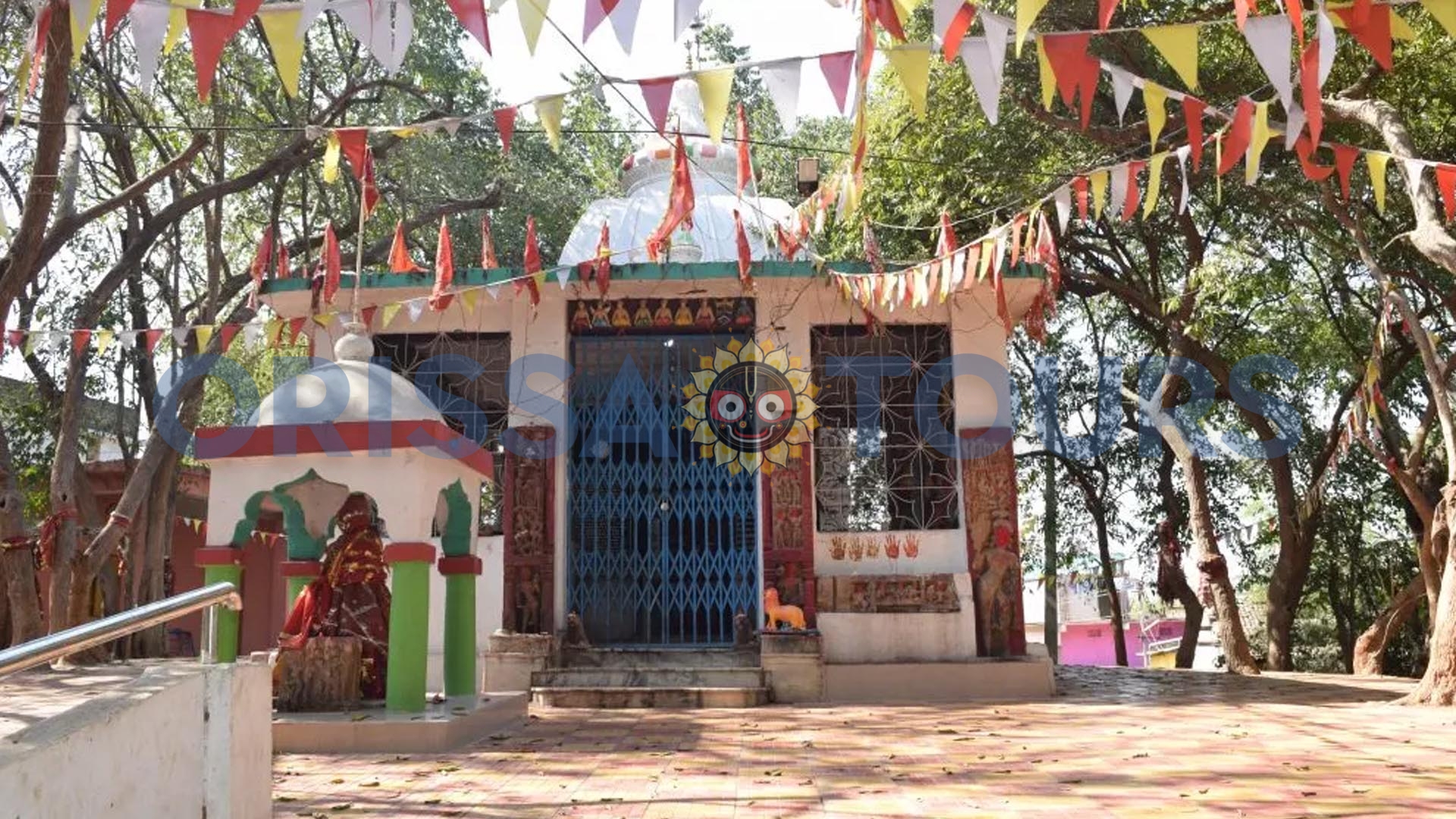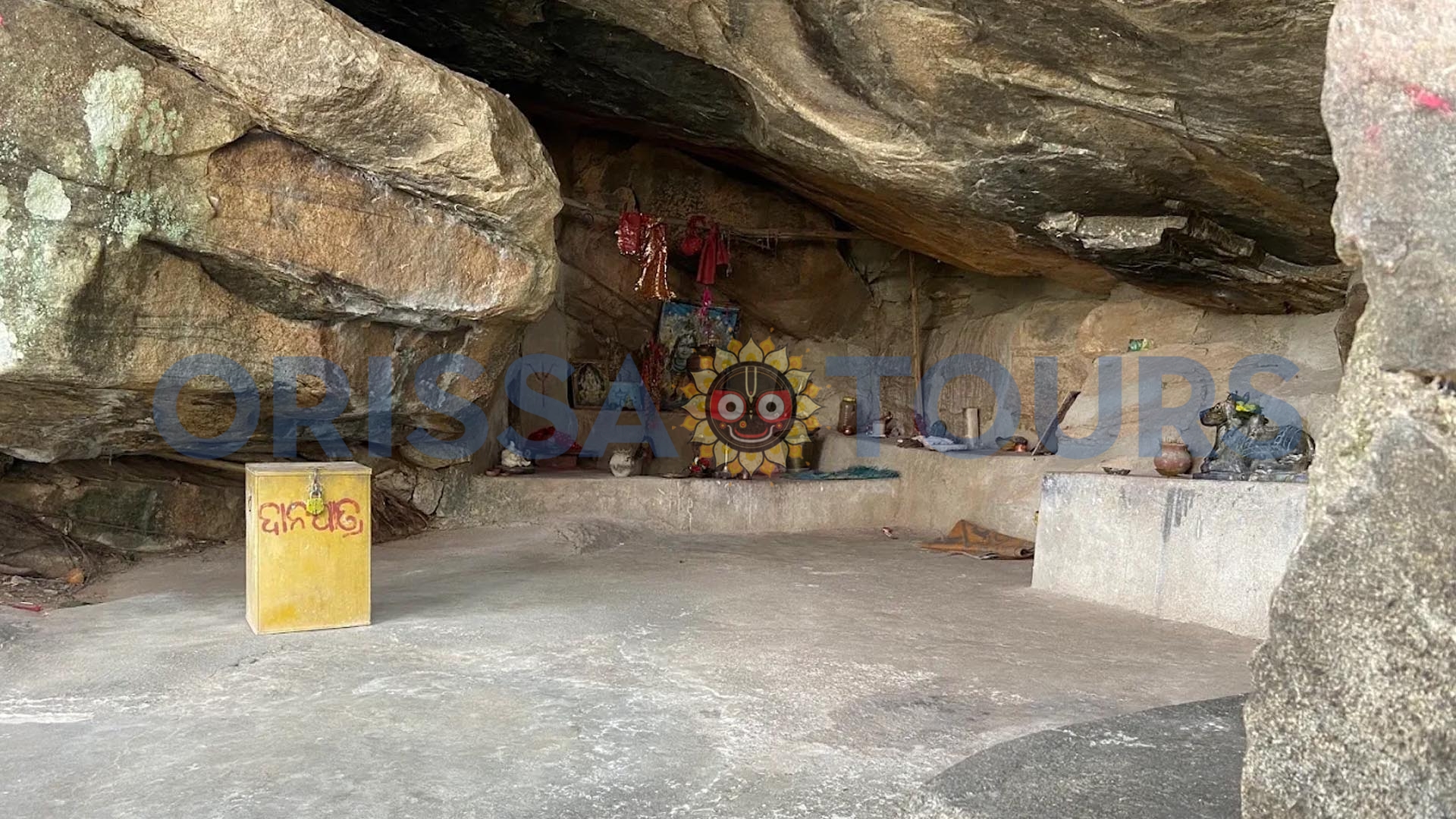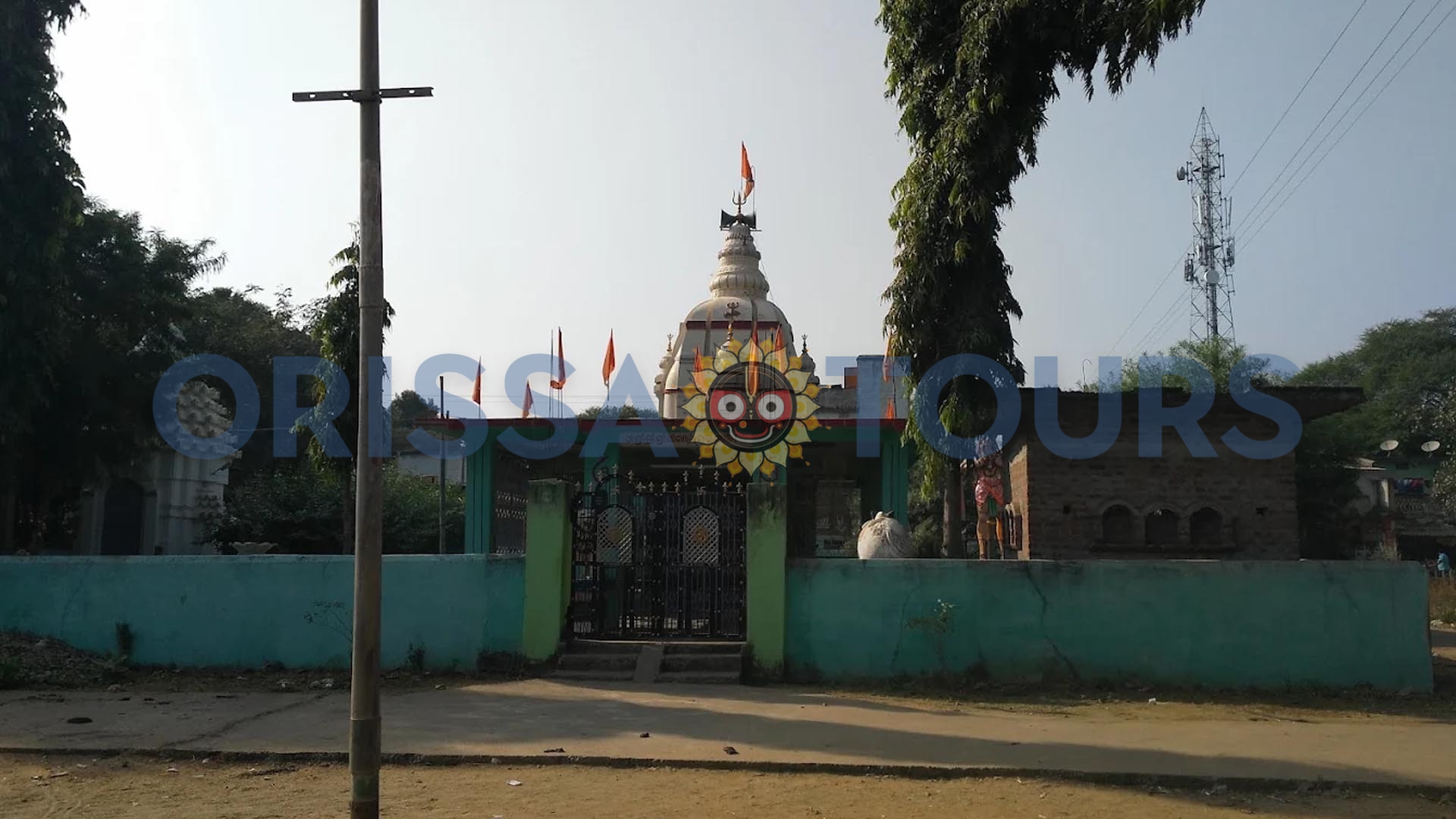Amidst the tranquil forest landscape surrounding Ulunda village in Subarnapur district lies Metakani Temple, one of Odisha’s most sacred destinations. This archaeological site and temple of worship for Maa Metakani showcases a distinctive appearance of the divine feminine form and has attracted devotees for many centuries. The temple is situated approximately 23 kilometers from Sonepur city, offering visitors a unique opportunity to experience the harmonious blend of sacred worship and natural beauty in one location.
A dense forest surrounds the temple. This remote location creates a mystic tranquility that is perfect for creating spiritual feelings in those who choose to worship. Those seeking spiritual peace will easily discount the frustrations of urban living after a post-visit to Metakani. The tranquillity often results in an experience that can rarely be achieved through visits to more urban/famous temples.
The temple fully celebrates and promotes the worship of Maa Metakani, and is well-known statewide and even nationally. Some individuals come from across India to seek the blessings of the goddess; witnesses will agree there is a certain peaceful spiritual energy here. This site is holistically blessed.
Historical Significance and Legends
The name Metakani Temple stems from interesting local folklore that has been passed down over generations. Local folklores suggest that the goddess Maa Metakani largely originated from a lady called “META.” As the story continues, it is said that once META was transformed into a divine being, she produced this powerful goddess. There is overwhelming evidence that reflects oral tradition and cultural richness that constructs a coherent picture of the spiritual endeavor throughout the history of Odisha.
While it is difficult to determine an exact date for when the temple was established, there is reason to suggest that the temple has been a worship site for many centuries. The temple has roots in the deeper past, which raises questions about its origin and antiquity. As one of the prominent Shakti Peethas of Odisha, the temple is where the feminine divine or Shakti is believed to be exercised in remarkable concentrations.
Although archaeological remains to determine the exact date are scarce, and inscriptions from historic kings’ regimes seem to be lost due to various factors, there are suggestions made by the archaeological remains and residents regarding the antiquity of the site as sacred, as several rulers and devotees congregated to develop, enhance, and preserve the temple site over the centuries.
Temple Architecture and Design
The architecture in the Metakani Temple is truly a part of the Odishan tradition in terms of Dharmaparamparurat, characterized by specific motifs and motifs that link the temple to creativity in the region. The building incorporates the Kalinga architectural style associated with Odishan temples, as demonstrated through the triangulated design and carved façade-charged surface. The decorative elements incorporate tree, animal, and mythological forms with ornamented planes and skies impaled by the soaring spire, or shikhara.
The temple, as a design element, incorporates odd elements such as carved stone walls connected by decorated door jambs and elaborate sculptures of deities and mythic scenes. The mandir offers devotees service in worship of the Maa Metakani deity, containing multiple beautifully crafted chairs in the mandir stock-and-retrieve system of perauan-tonic enclose the deity’s celestial location in original pilasters and ceiling focal through skilled elaborate craftsmanship in its ancient nearby (carpenter shop, lacquer, etc).
The fortifications in the ancient structure follow the site-vastu for temple design and follow site-constructed for orientation and energy-exposed forms of physical balance, referring to the seasons for chief construction use.
The site has space for smaller shrines, meditation rooms, and other small provisions for the devotees. The temple’s design to enclose the natural forest surrounding its defense represents unrivaled harmony, as the temple looks like it grew there. However, the forest-space around the temple and shrine recognized its spirit by its spirals of symbolic construction,n sacred structure, and the sacred forest were connected.
This unique atmospheric setting further enhances the ease of the devotees’ spiritual experience. The design had common-sense attributes such as the proper subsurface drainage and ventilation of dehydration and sub-structure exposure for the devotees, etc.
Religious Significance and Deity
Maa Metakani, the presiding deity of the Metakani Temple, is regarded as a form of divine feminine energy. She is said to be another incarnation of Maa Sureshwari, where her protective and nurturing side comes out. To devotees, Maa Metakani embodies a divine force that can fulfill all genuine desires and repel negative forces.
This goddess is known as being miraculous and demonstrating her power by blessing those who approach her sincerely and with true devotion to prayer. The local tradition has many miraculous instances of the goddess to show local devotees that the goddess is real and powerful. The goddess’s ability to assist in miracles has drawn pilgrims from great distances to worship her. Local tradition also indicates that the goddess shows extra kindness to women, children, and to people who are having difficulty in their personal lives.
The religious significance of the temple is not limited to individual worship. The temple is a place for gathering for all the people in the communities where the temple sits. It provides a place where people come together in a meaningful way, for geographic and cultural purposes. The goddess is believed to sanctify the entire region and, through her presence, create a spiritual protective umbrella over all local communities in the area.
Simply put, the local rituals, offerings, and prayers associated with the temple are sacred to maintain the sacred energies of the temple and reactivate the goddess’s excited energy and responsiveness to devotees. Each ritual will ensure the goddess is always there for her devotees and members of the local community when they call upon her.
Major Festivals and Celebrations
The Metakani Temple is bustling with activity during the major festivals, Chaitra Purnima and Dashara, observed with great reverence, pomp, and enthusiasm. The festivals build a colossal atmosphere that transforms the normally quiet temple complex into a festival site and draws thousands of devotees from all over the region.
Chaitra Purnima (March or April) is one of the biggest festivals at the temple, with a surge of devotees who attend to obtain the goddess’s blessings for prosperity, health, and happiness. With rituals involving several days of daily prayer ceremonies, cultural performances, and community feasts attended by hundreds, the celebration of the goddess.
Dashara (September or October) is yet another major festival and of deep significance to me. The Dashara festival marks the good, or the divine feminine power, winning over evil and bad negative forces. The celebration involves special prayers, the temple decorations, and the cultural performances, culminating with the distribution of prasad (blessed food), the devotees’ love.
Both festivals assist in fulfilling the expectations of a religious purpose for devotees, but also fulfill a responsibility of bringing people together as a community and maintaining social and cultural practices and customs of a traditional culture.
Visiting Hours and Best Time to Visit
To help visitors and devotees, Metakani Temple has established visiting hours, while also ensuring the temple grounds are kept safe and maintained at different times. Generally, the temple opens very early in the morning for the first prayer service, and remains open for devotees and visitors throughout the day, as there are specific times for different rituals and services.
As for seasonality, visitors should consider coming between October and March in the cooler months, typically when the weather is most favorable for spiritual activities, and many important festivals will take place. Because of the numerous festivals held during this time, it is an excellent opportunity for visitors to behold the cultural events associated with the temple. The monsoon season brings great natural beauty and is well known for its many green forests, but travel may become burdensome on the rainy and difficult roads.
The recommended time to visit the temple is during the early morning because it is the best way to have an authentic spiritual experience in terms of peace and tranquility in the sacred atmosphere of the temple. The morning prayers and rituals are unique during this time to develop a self-transcending, soulful, and connected experience.
In the evening ceremony or festivities, people come from both near and far to observe the temple brightly lit, in addition to cultural or kirtan events often found in the temple on a festive occasion. Visitors are recommended to get information from public officials or temple committee members before arriving to identify the best period or arrangements during some festival timeframes.
Facilities and Amenities
The Metakani Temple complex provides the kinds of facilities and services to assure comfort and convenience for devotees and visitors. The temple management makes available sufficient infrastructure for visiting pilgrims who arrive at the temple complex, especially during festivals and on other special occasions.
There are parking facilities near the temple complex that accommodate both two-wheelers and four-wheelers. The parking lot is managed properly, and security is in place for vehicles while pilgrims visit the temple complex. Clean drinking water is available inside the temple, so devotees maintain hydration during their visit. Toilet facilities are also available and are maintained at the proper level of cleanliness and hygiene.
There are designated shaded areas inside the temple complex where special prayers and rituals can be performed, designed adequately for devotees’ seating arrangements. Vendors and shops near the temple supply most religious items, flowers, and prasad materials. Basic medical facilities and first aid arrangements are in place as well in the event they are needed, so safety and health are in place for devoted visitors. Temple management will always strive to improve the facilities as much as possible while maintaining the sacred atmosphere and traditional character of the holy site.
Things to do near Metakani Temple
- Visit Hirakud Dam, one of the largest dams in India.
- Visit Sambalpur, a city known for its culture and heritage.
- Visit the Subarnameru Temple, another popular Hindu temple in the Subarnapur district.
- Go on a nature walk in the forests surrounding Metakani Temple.
Additional details
- The main deity of Metakani Temple is the goddess Metakani, who is depicted as a four-armed goddess riding a lion.
- The temple has a sanctum sanctorum, which houses the main deity. The sanctum sanctorum is surrounded by a mandapam, or congregation hall.
- The temple also has a natamandapa, or dance hall. The Natamandapa is decorated with sculptures of dancers and musicians.
- The temple is surrounded by a courtyard, which is surrounded by a wall.
- The temple complex also has some smaller shrines and temples.
- Metakani Temple is a popular pilgrimage destination for Hindus from all over India. The temple is also a popular tourist destination for visitors from all over the world.
Tips for visiting Metakani Mandir
- The best time to visit Metakani Temple is during the winter months (October to March). The weather is pleasant during these months.
- The temple is open from 6:00 AM to 6:00 PM.
- Visitors are required to dress modestly when visiting the temple.
- Visitors are also required to remove their shoes before entering the temple.
Tourist Facilities, Transportation, Tourist Attractions, How to Reach, Accessibility
Open Timing
Maa Metakani temple opening time is Monday to Sunday, 6 am to Evening 8 pm
Best Time to Visit
The best time to visit the Maa Metakani mandir is at all times of the year
Closest Bus Stand
The Closest Bus stand is Sonepur, which is located around 23 KM distance from Maa Metakani mandir
Closest Railway Station
The Closest Railway Station is Balangir, which is located around 70 km from Maa Metakani Mandir
Closest Airport
The Closest Airport is Veer Surendra Sai Airport, Jharsuguda, which is located around 120 KM distance from Maa Metakani Mandir and is about 297 km from Biju Patnaik International Airport, Bhubaneswar



